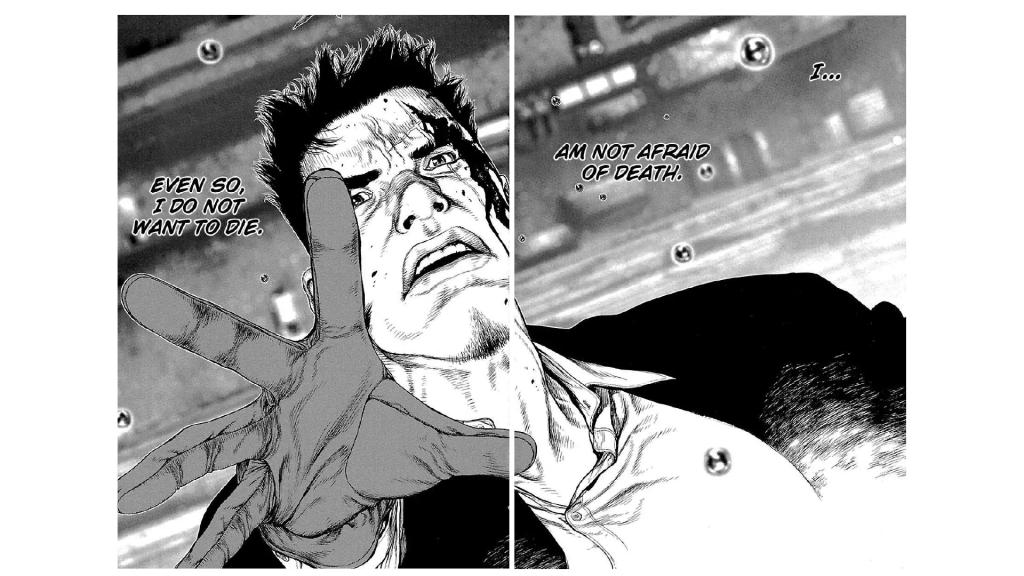Tufte’s theory of layering and separation focuses on avoiding clutter and confusion. Tufte refers to Josef Albers book ‘One Plus One Equals Three or More: Factual Facts and Actual Facts’ and states “when two elements show themselves along with assorted incidental by-products of their partnership — occasionally a basis for pleasing aesthetic effects but always a continuing danger to data exhibits.” – E. Tufte, Envisioning Information (1990). To summarise, layering and separation are necessary in order to grant order to information improving the readers experience. Good layering can be achieved through a combination of colour, spacing and grouping of familiars.

This panel has two main layers: the foreground with the character and the background including the building and the road. however within the foreground is even more layering, the scale of the characters hand implies he’s reaching out towards the reader. A faint outline of white is used to separate the foreground from the background, although simple in concept this is a very effective use of layering and separation as it does not take away from the overall visual, but prevents layers from cluttering.
An important part of this panel is the fact that it is a double page spread. As with manga pages are read from right to left, this means on the first page all the reader sees is a bit of the characters body with the text above. At first the reader is not likely to process fully what is going on but the meaning of the text is clear ‘I am not afraid of death’. But once they view the next page things become clear as they see that the character is falling. also the added text changes the previous lines meaning.
References:
Tufte, E.R., 1990, Envisioning Information p. 53. Cheshire: Graphics Press. Accessed [27/10/21].
Boichi, B., 2006. Sun-Ken Rock. Ch. 84. Shōnen Gahōsha: Young King. Accessed [27/10/21].
